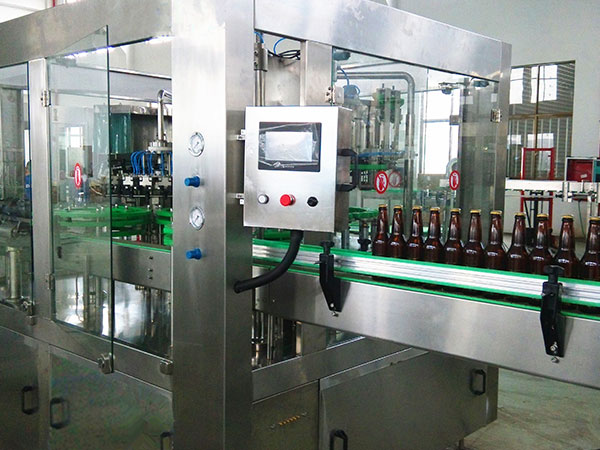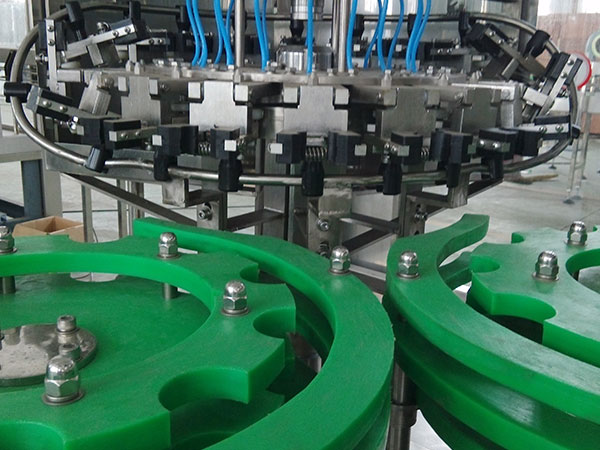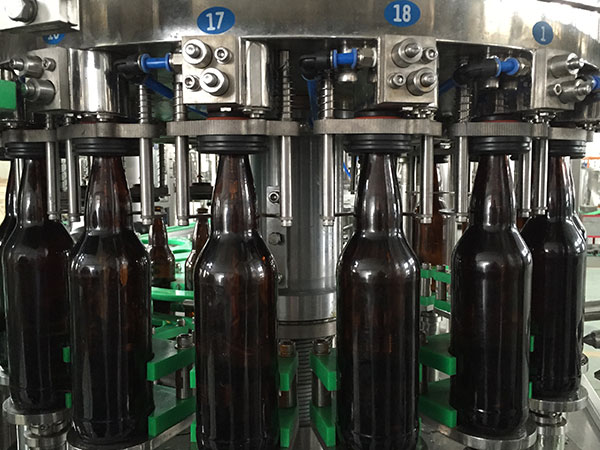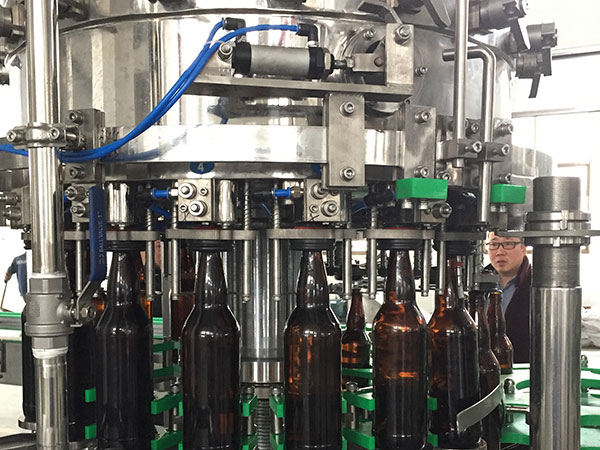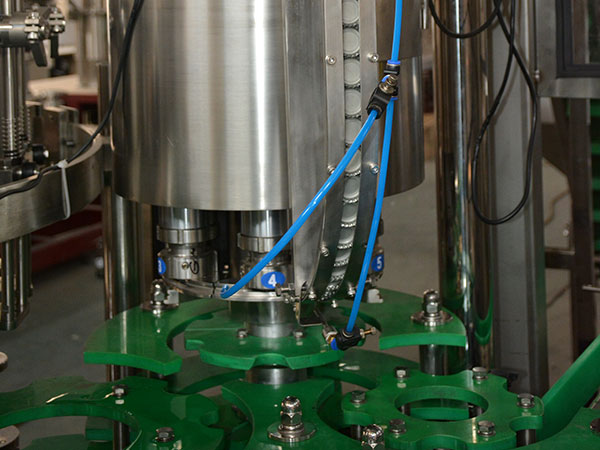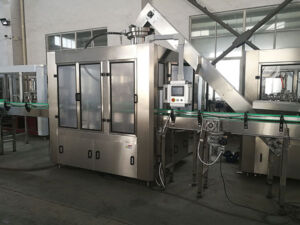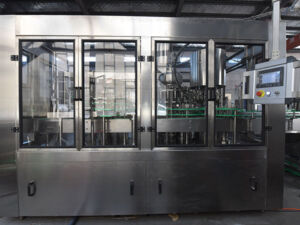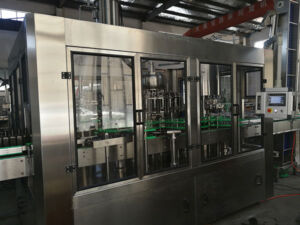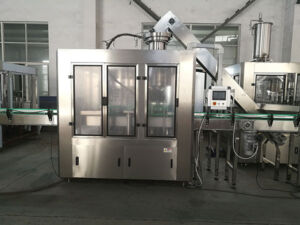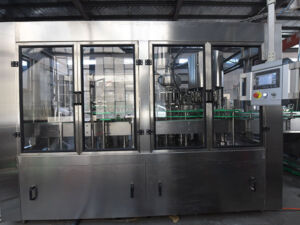Product attributes
Brand:EVERTOP
Models: BCGF24-24-8
Certificate: CE
Country of origin: CHINA
Trading information
Minimum minimum order size :1 Set
Price:USD 15,000 – 150,000 per Set
Payment method:30% by T/T in advance as deposit, balance 70% by T/T or irrevocable L/C at sight before shipment
Supply capacity :20 sets per month
Delivery date :15-30 days
Conventional packaging:Wooden case
Product description
This glass bottle beer filling machine integrates washing, filling and sealing, PLC control, touch screen operation, high degree of automation. For glass bottles, screw is used for bottle feeding, the guard wheel is made of polymer material, and the filling valve contains centering filling to ensure smooth operation. For beer filling, adopting vacuumize twice, vacuumize once before filling, then flush the bottle with carbon dioxide, extract carbon dioxide again, ensure that there is no air residue in the bottle, and then fill the bottle. Between filling and sealing, add foam stimulating devices according to customer requirements, use high-pressure water lines to stir up foam at the bottle mouth, so as to take away the air at the bottle mouth with foam, and ensure the cleanness of carbon dioxide in the bottle, to ensure the taste of beer. The crown capping machine is a vibrating capping machine, and the capping die is made of alloy, which will not scratch the paint on the surface of the bottle cap.
Filling process:
1. Vacuum pumping and CO2 pre inflation
The inflation valve opens to form a path between the CO2 space of the wine bottle and the wine jar. CO2 is poured into the bottle through this path.
When the set time is reached, the charging valve is closed and CO2 charging is completed.
2. Vacuum pumping
The vacuum pumping valve rod is opened to form a path between the wine bottle and the vacuum channel. The mixture of CO2 and air in the bottle is discharged from the bottle through this path, forming a vacuum in the bottle.
When the set time is reached, the vacuum pumping valve rod is closed, and one vacuum pumping is completed.
3. Standby pressure
The inflation valve opens to form a passage between the bottle and the air return passage. CO2 is poured into the bottle through this channel until the CO2 pressure in the bottle is equal to the pressure in the wine tank.
4. Filling
The liquid valve is opened to form a channel between the wine bottle and the wine vat, through which the materials enter the bottle. At the same time, the CO2 in the bottle flows back to the wine vat through the air return pipe at the same speed. Until the material in the bottle rises and overflows the air return pipe to form a pressure balance, the compressed CO2 in the bottle seals the material and continues to flow out.
5. Close the valve
After the filled bottle is allowed to stand for a certain time, close the liquid valve and inflation valve to cut off the passage between the wine tank and the bottle.
6. Exhaust
The vent valve opens, creating a path between the bottle and the atmosphere. The pressure in the bottle is released through this passage. Finally, the pressure relief process is carried out until the wine bottle is detached from the filling part.
7. Blowing residue
When the filling part is located between the bottle outlet and bottle inlet star wheel, the inflation valve is opened and then closed after the preset time. In this way, the CO2 gas in the wine tank will blow out the residual materials in the air return pipe.


